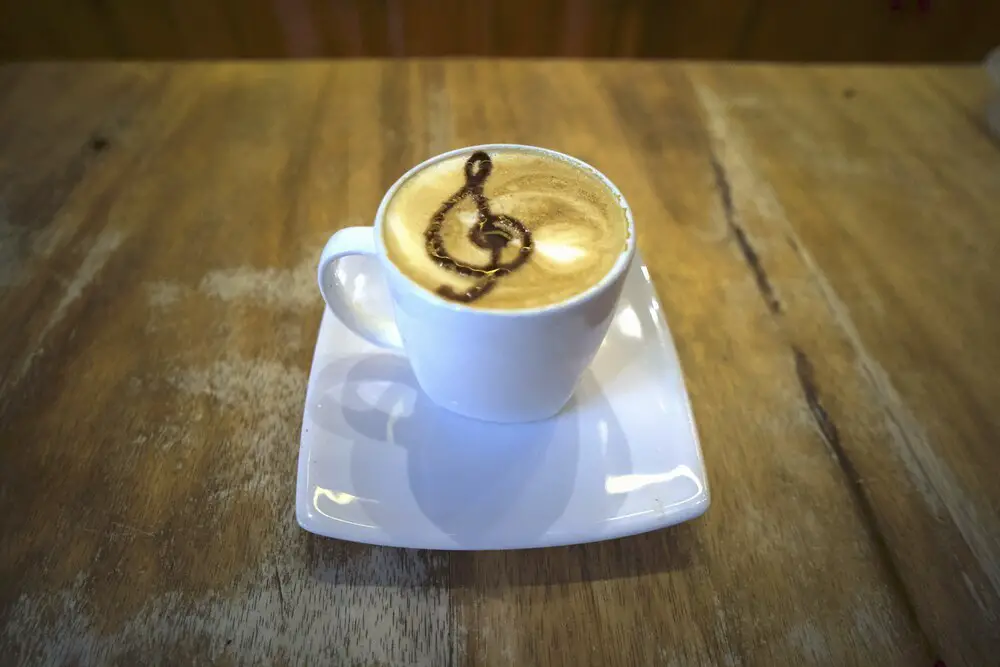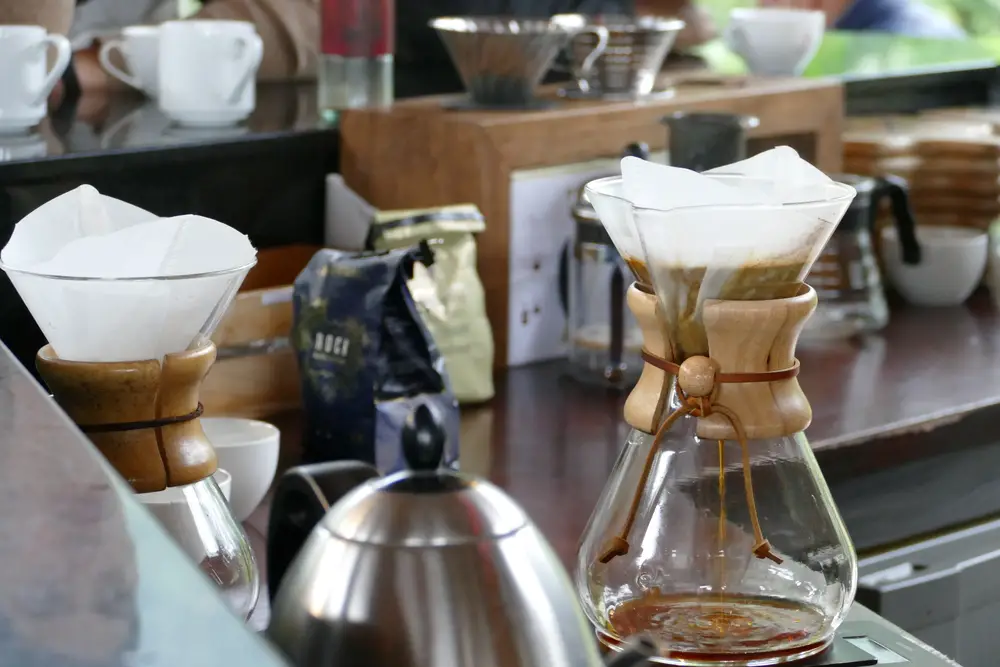If you want to get started in the world of latte art, you’re in the right place! Learn the best techniques so you can start decorating your coffee like a pro.
Table of Contents
What is latte art?
To talk about techniques and tips, we must first understand what latte art is all about. It is the patterns that are created on the surface of coffees. Baristas are the artists and protagonists in this discipline.
The history of latte art begins around 1980 and of course started in Italy and the United States. It is not known exactly who started this art. The great baristas began to create coffee figures on the milk foam, and this practice gained more and more importance in the following years.
But it was David Schomer who developed and spread latte art as we know it today. David is a great reference in the coffee industry and even wrote a book on espresso techniques, which he authored in 1994.
Although the name Latte Art suggests that you can only make it in lattes, that is not the case. You can make it in a variety of milky coffee preparations such as cappuccino, café mocha, and espresso macchiato. Meanwhile, there are even competitions where each barista demonstrates his best coffee skills.
There are different ways and techniques to create these designs. They can be created with the same frothed milk directly in the coffee, with stencils, or with sauces. Don’t worry, we will talk more about this later.
Visually, drinking a cappuccino with only one layer of frothed milk is not the same as drinking a cappuccino with a shamrock, a heart, a flower, or any other figure on the surface.
What do you need for latte art?
This may sound like a lot of elements, but there’s no need to panic!
- Whole milk.
- Coffee beans or ground coffee.
- Cinnamon or cocoa.
- Chocolate sauce.
- Espresso machine or a high-pressure coffee maker with a nozzle or frother for making espresso and milk.
- Milk jug with a capacity of about 600 ml.
- Cappuccino or latte cup with a large mouth.
- Thermometer for liquids.
- Stencils for latte art.
- Chopsticks.
Step by step to make latte art
Let’s take a general look at how latte art works and how you need to proceed step by step so that you don’t fail.
- The first thing you need to do is brew a good espresso. This will play a part in the success of your preparation. It must be an espresso from an espresso machine or a high-pressure machine, so that the coffee will have a good layer of cream.
- Fill your milk jug only halfway with milk. This way there is enough room for frothing milk, which will increase in volume.
- Place the nozzle in the jug directly on the surface of the milk. In other words, the nozzle does not need to be fully immersed in the jug. The steam should come out no more than 1 inch below the milk’s surface.
- Let the jug stand until the milk reaches about 65 to 68 °C. It is best to clean the nozzle immediately. Move the jug slightly in a circle and tap it against the work surface or a flat surface. This will compress the foam and give the milk more shine and a velvety texture.
- It’s time to add the milk to the coffee! Gradually add the milk. Start adding the milk slowly, and increase the speed when you’re halfway through.
- When you reach the end of the cup, you can make any pattern you like – let your imagination run wild here!
- You can decorate the milk foam with cinnamon or cocoa and a stencil to add the finishing touch to the artwork. You can also use chocolate sauce and sticks to get the desired shape – done!
Techniques for making latte art
Are you still in doubt about how to make latte art? Now that you know the step-by-step instructions, let’s look at the techniques and how you can make the most popular and eye-catching shapes.
Free pour
This technique is perhaps one of the most popular among baristas, but it requires a lot of practice. As the name suggests, the shape is created directly when you pour the milk freely into the coffee.
The cup must be tilted so that the liquid milk is added first and the foam remains on the surface. The jug is moved according to the desired shape and straightened after filling the cup to complete the shape.
You need practice and speed for this technique. The milk foam doesn’t last long, so it has to be done quickly. The heart, herringbone, and tulip are the most common shapes in this technique. Below you will find detailed step-by-step instructions.
Etching
With this technique, you have the opportunity to make more elaborate designs. It is a simpler technique that you can try right away. After you add the frothed milk, you will need pens and tools specifically designed for making lattes.
Etching is the technique used to create those amazing drawings we see in great cafes. You can also use stencils with cocoa or cinnamon powder. Nowadays there is a wide range of stencils with all shapes.
Fudge
This technique is particularly suitable for the use of chocolate sauce. With the sauce, you also have great freedom to create different shapes. In addition, the dark color stands out very well against the white foam of the coffee. You get a latte art with a clear definition.
You can use chopsticks to better define the shape of the drawing. One of the most common methods is to draw several circles in the foam, each inside the other. Then you can use a toothpick to draw lines from the center outward, and you’ll have a pretty pattern that’s very easy to make.
Learn how to do the Rosetta
Tilt your espresso cup about 40 degrees. Add the liquid milk in a circular motion until the cup is half full. Then bring the pitcher close to the cup and pour in the creamy part, moving the pitcher back and forth while holding the coffee cup straight. This is where you form the branches.
Make sure to leave a little space between the sweeps so that each line of the herringbone is clearly visible. When you finish the top of the rosetta, cut the figure in half (with the milk) until you reach the other end of the cup.
Learn how to draw a heart
Tilt your coffee cup about 40 degrees. Start adding the liquid part of the milk in circular motions around the center of the cup. Pause for a moment. Add the final shot of milk while holding the cup straight. In the center of your coffee, you will see a circle that you will cut in half in the opposite direction to the other end to form the tip of the heart. You’re done with the latte art!
Learn how to draw a tulip
Tilt your espresso cup 40 degrees. Pour the milk into the center of the cup in a circular motion. When the cup is almost full, pause for a moment. Start making one circle at a time, bringing each circle to the center of the previous one until you have completed 3 circles. Then cut the three circles in half with a line to the opposite end of the cup.
Tips for making latte like a pro
Here are the best tips to create latte art like a pro.
The milk
Try to use fresh and cold whole milk. It is the best option for good consistency. The fat content is very important for frothing the milk. Also, try to bring the milk to a temperature between 4 and 7 °C (39 – 45 °F) so that you have more time for frothing while increasing the temperature. If you do not choose the right milk, you will not get the ideal texture for making the figures.
When you are done frothing the milk, make sure the bubbles are very small. If you see large bubbles, tap the pitcher firmly against a flat surface several times to get a smoother texture.
When you steam the milk, it should not get hotter than 71 °C – 160 °F. This is why it is so important that you use a thermometer to monitor the ideal temperature.
The amount of milk
Regardless of the form or technique you want to use, you must first add the most liquid part of the milk so that it forms the base of the foam.
The ideal height at which you should place the pitcher is not too far from the cup, approximately 5 centimeters away. As you make the figure, bring the pitcher even closer. Let the milk pour gently but steadily.
Pouring position
Latte art is like a canvas and paints. The canvas is the espresso and the milk is both the paint and the brush. Make sure you pour the milk in the center so that your figures can expand evenly.
The coffee
If you don’t have a good espresso, latte art is just one way to fake a good coffee.
Practice makes perfect
At first, you may not get the first shapes perfect, just keep trying because practice makes perfect. As you get to know how milk behaves, you will find it easier to make the figures.
Also, when you pour the milk, keep the shape in mind so you can move the pitcher in the direction of the desired shape.
Let your imagination run wild
The most important thing is that you can experiment with creating your own shapes with every cup of coffee. Little by little you will loosen your hand and feel more confident.
Conclusion
You don’t need a special talent to make a little work of art out of coffee and milk. However, it does take practice and you shouldn’t get discouraged at the beginning. And as always, of course, we recommend using Colombian coffee, in our opinion the best in the world.



